 August 19, 2021 John E. Ross, KD8IDJ, Editor
| ||||||
Hurricane Watch Net Scratches Reactivation as Grace Makes Landfall After activating on Wednesday, August 18, the Hurricane Watch Net (HWN) scrapped plans to reactivate the next morning as Hurricane Grace made a pre-sunrise landfall on the Yucatan Peninsula, bringing strong winds and heavy rain, before moving out over the Gulf of Mexico. The HWN announced plans to activate Wednesday, August 18, and Friday, August 20, after Tropical Storm Grace attained Category 1 hurricane status. Air Force Reserve and NOAA hurricane hunter aircraft determined that Grace became a "We still expect Grace to make another landfall late Friday evening or early Saturday morning," HWN Manager Bobby Graves, KB5HAV, said. "Looking ahead to the final landfall, unless something drastically changes, we will plan to activate Friday afternoon [at 2100 UTC on 14.325 MHz]," Graves said. After moving over the southwestern Gulf of Mexico early Friday, Grace is expected to make its second landfall somewhere between Túxpam and Veracruz, Mexico, just before sunrise on Saturday. "This storm could make as many as three landfalls," Graves noted, if Grace hits the island of Cozumel before reaching the mainland of "Observed, ground-truth" weather data from amateur radio volunteers in affected areas can aid forecasters at the National Hurricane Center. The National Hurricane Center was predicting that Hurricane Grace would follow a west to northwest to westward motion for the next several days. Some additional strengthening was expected before the storm's center reached the eastern Yucatan Peninsula before weakening over land. Grace was expected to regain strength as it moves over the southwestern Gulf of Mexico on Friday. Hurricane-force winds extend outward up to 25 miles from the storm's center, and tropical-storm-force winds extend outward up to 115 miles. This is a developing news story. It will be updated on the ARRL website as new information becomes available. Radio Club of Haiti President Reports Significant Structural Damage from Earthquake Radio Club of Haiti President Jean-Robert Gaillard, HH2JR, was among those reporting significant structural damage in the wake of a magnitude 7.2 earthquake on August 14 near Les Cayes. A request has been posted to keep these primary International Amateur Radio Union The 1229 UTC quake occurred some 20 miles east-northeast of Les Cayes and 7 miles northeast of Saint-Louis-du-Sud on the end of Hispaniola that's closest to Cuba. The quake was about 80 miles west of Haiti's capital, Port au Prince. "We will stay alert," said IARU Region 2 Emergency Coordinator Carlos Alberto Santamaría González, CO2JC. There's been no word of any amateur radio role in the recovery. Haiti also found itself in the direct path of then-Tropical Depression Bill Hoops, K3WJH, an ARRL member in Pennsylvania who is with Southern Baptist Disaster Relief, reported that the US Coast Guard is flying injured people to hospitals that are open. Some radio amateurs volunteer with Southern Baptist Disaster Relief, which has been working through red tape to gain permission to assist in Haiti. Hoops said he continues patiently monitoring HF in Pennsylvania but had not been hearing anything from Haiti. The US has sent a search-and-rescue team to Haiti to help locate victims. The island nation of 11 million, which shares Hispaniola with the Dominican Republic, has yet to fully recover from a disastrous Patience already was wearing thin when the quake hit, with Haitians struggling with the coronavirus, gang violence, grinding poverty, and the July 7 assassination of President Jovenel Moïse. Media report that upward of 1,900 have been killed in western Haiti, and thousands more have been injured. Survivors sought shelter in tents, while search-and-rescue teams continue to dig through rubble for survivors and additional victims. Medical care and even basic supplies have been reported scarce in the quake zone, and some injured survivors have been airlifted to Port au Prince. Seismologists say the quake occurred 6 or 7 miles below ground and was felt as far away as Jamaica, some 200 miles distant. This is a developing news story. It will be updated on the ARRL website as new information becomes available. ARRL Podcasts Schedule
The On the Air and Eclectic Tech podcasts are sponsored by Icom. Both podcasts are available on iTunes (iOS) and Stitcher (Android), as well as on Blubrry -- On the Air | Eclectic Tech. FCC Application Fees Unlikely to Go into Effect Until 2022 The previously announced schedule of FCC amateur radio application fees likely will not go into effect before 2022. FCC staff confirmed during a recent virtual meeting with Volunteer Examiner Coordinators (VECs) that the agency is still working on the necessary changes to the Universal Licensing System (ULS) software and other processes and procedures that must be in place before it starts collecting fees from amateur applicants. Earlier this year, the FCC said it would not start collecting fees from amateur applicants before this summer. The new estimate is that the fees won't go into effect until early next year. Once it's effective, a $35 application fee will apply to new, modification (upgrade and sequential call sign change), renewal, and "Once the FCC application fee takes effect, new and upgrade applicants will pay the exam session fee to the VE team as usual, but they'll pay the $35 application fee directly to the FCC using the FCC Pay Fees system," she explained. When the FCC receives the examination information from the VEC, it will email a link with payment instructions to each successful candidate, who then will have 10 days from the date of the email to pay. After the fee is paid and the FCC has processed an application, examinees will receive a second email from the FCC with a link to their official license. The link will be good for 30 days. Licensees also will be able to view, download, and print official license copies by logging into their FCC ULS account. The FCC no longer provides printed licenses. Licensees can log into the ULS with their 10-digit FRN (FCC Registration Number) and password at any time to view and manage their license and application, print their license, and update anything in their FCC license record, including adding an email address. Read an expanded version of this story. ARRL Learning Network
Introduction to DMR and Digital Voice by Tim Deagan, KJ8U / Thursday, September 9, 2021 @ 3:30 pm EDT (1930 UTC) An introductory overview of Digital Voice (DV) technologies for ham radio. Focus on DMR with notes on System Fusion, D-STAR, etc. Description of DV architecture, components, and the interesting opportunities, as well as challenges, it presents amateur radio operators. Working the Pileup, presented by Ron Delpiere-Smith, KD9IPO / Tuesday, October 5, 2021 @ 1:00 pm EDT (1700 UTC) Ron Delpiere-Smith, KD9IPO, Vice President of the Chicago Suburban Radio Association and an ARRL Assistant Section Manager in Illinois, will offer an enlightening discussion on working a pileup from both sides of the contact. Whether your interest lies in Field Day, contesting, special events, or rare DX, this is a must-see presentation. Ron will discuss search-and-pounce and running techniques, when to use them, and some tips on working them to your advantage. The ARRL Learning Network schedule is subject to change. IARUMS Intruder Watch Reports "Burst Signal" from China The International Amateur Radio Union (IARU) Region 1 Monitoring System (IARUMS) reports that in addition to the already well-known intruders, some new or rarely heard signals have been spotted, including a burst signal from an over-the-horizon radar (OTH-R) in China. The IARUMS July newsletter reported that this signal -- in 3.8- NATO (North Atlantic Treaty Organization) military systems were more active in various amateur bands using a variety of modes, such as MIL188-110A, LINK 11 CLEW and SLEW, STANAG 4285, STANAG 4481-FSK, and MIL188-14A ALE. FSK-ARQ and PSK-ARQ emissions with typical 600 baud, 600 Hz, or even 1200 Hz, have been conspicuous for some time. These are known as DPRK 600 and 1200, respectively, and are attributed to North Korea. For many days, a LINK 11 CLEW station was active on 7159.0 kHz in DSB mode (double sideband, 6 kHz wide), at times causing heavy interference. Predominant over-the-horizon radars monitored included the Russian Contayner, as well as the British PLUTO system from Cyprus, generating annoying interference. On 14301.9 kHz, an orthogonal frequency division multiplexing (OFDM) 60 signal could be found occasionally. Some broadcasters interfere regularly. Radio France Internationale on 7205 kHz splatters down to 7186 kHz, 2100 - 2200 UTC. The Voice of Broad Masses is regularly found on 7140 and 7180 kHz. China Radio International is often found on 14000 kHz, and Sound of Hope from Taiwan is sometimes audible if conditions permit, but the signal is often jammed. Amateur Radio in the News ARRL Public Information Officers, Coordinators, and many other member-volunteers help keep amateur radio and ARRL in the news.
Share any amateur radio media hits you spot with us. Announcements
SAQ Reports "an Incredible Number" of Listeners for July 4 Transmissions The Alexander Grimeton Friendship Association reports "an incredible number" of listener reports -- 524 in all -- for its July 4 Alexanderson Day transmissions from SAQ, the Alexanderson alternator very-low-
frequency (VLF) station in Sweden. SAQ transmits on 17.2 kHz. "We are overwhelmed by all the fantastic feedback we have received, from all of you around the world, in listener's reports and on our YouTube channel," the association said. "The weather on Alexanderson Day was sunny, with temperatures around 25 °C. Some approaching thunderstorms could be seen on the horizon," the report said. "For the first time since the pandemic started, we were able to have a limited, seated audience in the transmitter hall -- fantastic! The Alexander Grimeton Friendship Association managed to carry out two successful transmissions to the world from the old Alexanderson alternator SAQ." The first transmission was initiated at 0830 UTC, with the startup and tuning of the Alexanderson alternator. The message was sent out a half-hour later, and the transmission event was livestreamed via YouTube. A second transmission was made at 1200 UTC. Amateur station SK6SAQ, which operates from the SAQ site, was on the air for Alexanderson Day. "On Alexanderson Day, HF conditions were not optimal, but the radio amateurs reached 169 QSOs with 21 countries, mostly in Europe and a few from the US," the report continued. "Two stations were in operation, with both SSB and CW." The Alexanderson alternator is an electro-mechanical radio transmitter that dates to the 1920s. Jay Rusgrove, W1VD, in Burlington, Connecticut, was among the US listeners who submitted a report. "The first transmission was a washout due to high QRN," he recounted. "The second transmission had somewhat lower QRN levels. Reception was not as good as some years' summer transmissions, which turn out to be unexpectedly good." Rusgrove posted a brief audio file from the second transmission tune-up and message transmission. (Listen closely for the clean CW signal beneath the noise.) Sailing Vessel with Ham Radio History Marks 100 Years The schooner Bowdoin is a century old this year. Now owned by the Maine Maritime Academy (MMA) as a training vessel, the ham radio history of the 88-foot (LOA) Bowdoin is often neglected. Constructed in Maine specifically for Arctic exploration, the vessel relied on amateur radio for communication during explorer Donald B. MacMillan's Arctic Expedition of 1923 and on the MacMillan-McDonald-Byrd Expedition of 1925 -- thanks in part to ARRL co-founder Hiram Percy Maxim, The longwave transmitters MacMillan used on his earlier missions had proved "unable to penetrate the screen of the aurora borealis," ARRL historian Michael Marinaro, WN1M, explained in his article, "Polar Exploration," in the June 2014 issue of QST. In 1923, MacMillan turned to ARRL for help in outfitting his next expedition with better wireless gear. Marinaro recounted, "It was enthusiastically provided." Maxim and the ARRL Board recruited Donald H. Mix, 1TS, of Bristol, Connecticut, to accompany the crew as its radio operator. M.B. West, an ARRL Board member, designed the gear, which was then built by amateurs at his firm, Zenith Electronics. The transmitter operated on the medium-wave bands of 185, 220, and 300 meters, running 100 W to a pair of Western Electric "G" tubes. Earlier exploratory missions had used gear that operated on longwave frequencies. The shipboard station on board the Bowdoin was given the call sign WNP -- Wireless North Pole.
MacMillan's subsequent attempt at the North Pole centered around wireless. The objectives supported by the Navy and the National Geographic Society were to determine the full capabilities of radio north of the auroral belt and to explore the northern reaches by air. The outstanding accomplishment of the 1925 expedition was in the sphere of radio. Utilizing shortwaves, the expedition was in consistent contact with the outside world throughout the journey, to the delight of the amateurs who were able to work them. The phenomenal success proved to the Navy that shortwaves were definitely superior to the longwaves and ultra longwaves that fleets had been using. In Brief...
The K7RA Solar Update Tad Cook, K7RA, Seattle, reports: Weak solar activity persists, but with just one spotless day in the current August 12 - 18 reporting week -- Friday, August 13. Last week, we reported 4 days with no sunspots over the previous 7 days. The average daily sunspot number increased from 9.9 last week to 17.7 this week. Solar flux was the same, with the average inching from 73.7 to 73.8.
Predicted solar flux is 75 on August 19 - 20; 73 on August 21 - 23; 72 on August 24 - 26; 73 on August 27 - 29; 74 on August 30 - September 1; 73 on September 2 - 11; 74 on September 12; 73 on September 13 - 17; 72 on September 18, and 73 on September 19 - 25. Predicted planetary A index is 5 on August 19 - 20; 8, 8, 12, 14, 12, and 8 on August 21 - 26; 5 on August 27 - September 1; 8 and 12 on September 2 - 3; 5 on September 4 - 10; 8 on September 11 - 13; 5 on September 14 - 18; 8, 12, and 8 on September 19 - 21, and 5 on September 22 - 28. On August 14, Spaceweather.com reported no sunspots and that, so far in 2021, there have been 56 days with no spots. "That might sound like a lot, but it is in fact a sharp reduction from hundreds of spotless days observed in 2019 and 2020. Despite today's blank sun, solar activity is intensifying compared to previous years," Spaceweather.com observed. Sunspot numbers for August 12 - 18 were 11, 0, 47, 23, 14, 13, and 16, with a mean of 17.7. The 10.7-centimeter flux was 73.6, 72.9, 72.6, 74.6, 74.4, 73.1, and 75.3, with a mean of 73.8. Estimated planetary A indices were 4, 6, 5, 10, 7, 5, and 6, with a mean of 6.1. Middle latitude A index was 6, 9, 4, 13, 8, 7, and 6, with a mean of 7.6. A comprehensive K7RA Solar Update is posted Fridays on the ARRL website. For more information concerning radio propagation, visit the ARRL Technical Information Service, read "What the Numbers Mean...," and check out this Propagation Page. A propagation bulletin archive is available. For customizable propagation charts, visit the VOACAP Online for Ham Radio website. Share your reports and observations. Just Ahead in Radiosport
Upcoming ARRL Section, State, and Division Conventions Some conventions and hamfests may have been canceled or postponed due to the coronavirus pandemic. Check the calendar of canceled events on the ARRL website.
Find conventions and hamfests in your area.
ARRL -- Your One-Stop Resource for
Subscribe to...
Free of charge to ARRL members...
| ||||||
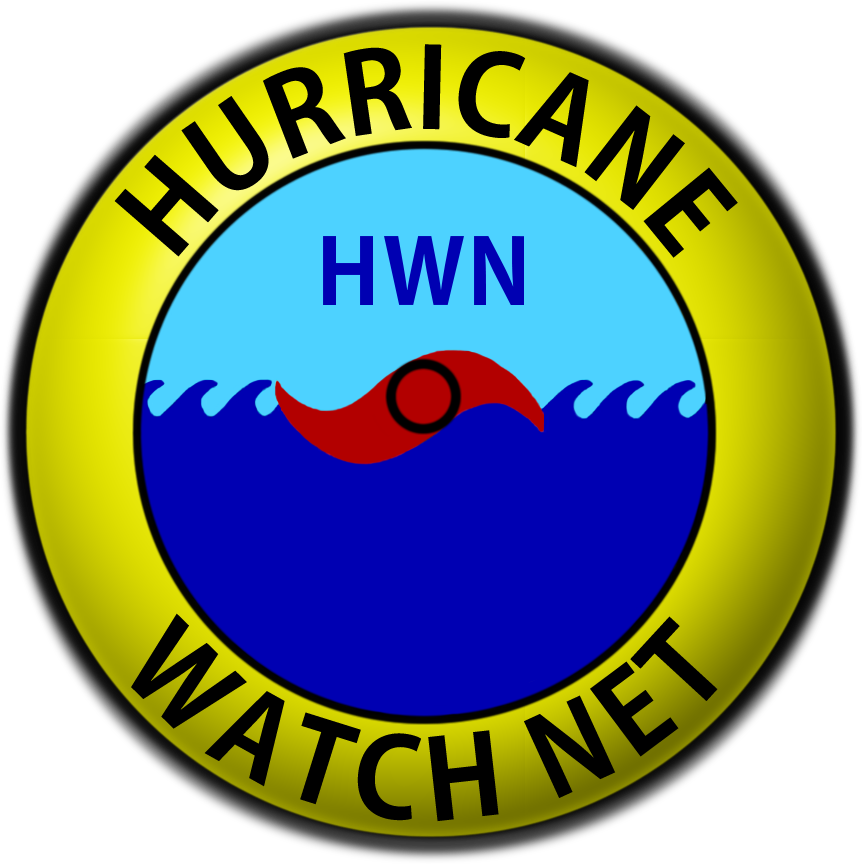 hurricane just west of Grand Cayman Island.
hurricane just west of Grand Cayman Island..png) Mexico. A Hurricane Warning is in effect for the Yucatan Peninsula from Cancun to Punta Herrero, including Cozumel.
Mexico. A Hurricane Warning is in effect for the Yucatan Peninsula from Cancun to Punta Herrero, including Cozumel.-1.jpg) (IARU) Region 2 emergency frequencies clear: 3750 kHz, 7150 kHz, and 14,330 kHz. At this time, it is not known if amateur radio volunteers have had a role in the recovery effort.
(IARU) Region 2 emergency frequencies clear: 3750 kHz, 7150 kHz, and 14,330 kHz. At this time, it is not known if amateur radio volunteers have had a role in the recovery effort.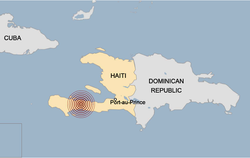 Grace, which dumped heavy rain spreading westward across southern Haiti, with a threat of flash flooding and mudslides in Hispaniola to continue through Tuesday.
Grace, which dumped heavy rain spreading westward across southern Haiti, with a threat of flash flooding and mudslides in Hispaniola to continue through Tuesday.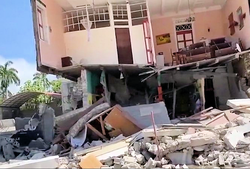 earthquake in 2010 that devastated much of Port au Prince.
earthquake in 2010 that devastated much of Port au Prince..jpg) The latest episode of the On the Air podcast (Episode 20) features a discussion with Oliver Dully, K6OLI, who describes how amateurs use the Winlink network for various public service applications. He also discusses the equipment and software necessary to access Winlink.
The latest episode of the On the Air podcast (Episode 20) features a discussion with Oliver Dully, K6OLI, who describes how amateurs use the Winlink network for various public service applications. He also discusses the equipment and software necessary to access Winlink..jpg) The latest edition of Eclectic Tech (Episode 40) describes how NASA is using rockets to study Very Low Frequencies. It also discusses a new Universal Serial Bus standard that allows higher voltages and currents. Topping things off is a chat with Dr. Dan Fay, KG5VBY, about QMesh, an innovative way to send digital voice communications using inexpensive LoRa transceivers.
The latest edition of Eclectic Tech (Episode 40) describes how NASA is using rockets to study Very Low Frequencies. It also discusses a new Universal Serial Bus standard that allows higher voltages and currents. Topping things off is a chat with Dr. Dan Fay, KG5VBY, about QMesh, an innovative way to send digital voice communications using inexpensive LoRa transceivers..jpg) vanity call sign applications. All fees will be per application. Administrative update applications, such as those to change a licensee's name, mailing, or email address, will be exempt from fees. ARRL VEC Manager Maria Somma, AB1FM, said Volunteer Examiner (VE) teams will not face the burden of collecting the $35 fee.
vanity call sign applications. All fees will be per application. Administrative update applications, such as those to change a licensee's name, mailing, or email address, will be exempt from fees. ARRL VEC Manager Maria Somma, AB1FM, said Volunteer Examiner (VE) teams will not face the burden of collecting the $35 fee. Visit the
Visit the .png) second bursts -- was encountered repeatedly on different 40-meter frequencies as well as on 20 meters.
second bursts -- was encountered repeatedly on different 40-meter frequencies as well as on 20 meters..jpg) The Intrepid-DX Group has announced its second annual Youth Essay Contest. The prize is an Icom IC-7300. The contest aims to gather views and suggestions of young people involved in amateur radio. The
The Intrepid-DX Group has announced its second annual Youth Essay Contest. The prize is an Icom IC-7300. The contest aims to gather views and suggestions of young people involved in amateur radio. The 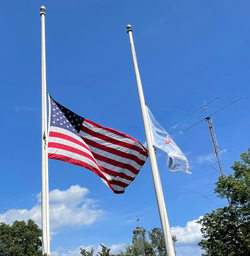 Connecticut Governor Ned Lamont ordered flags flown at half-staff to commemorate Colin McFadden, KB1YYG, a 26-year-old Bristol firefighter and EMT. McFadden died on August 10 after becoming ill while battling a fire, fire officials said. McFadden was an ARRL member and the vice president of the ARRL-affiliated Bristol Radio Club. Club President Dan Wall, W1ZFG, called McFadden "a very committed volunteer."
Connecticut Governor Ned Lamont ordered flags flown at half-staff to commemorate Colin McFadden, KB1YYG, a 26-year-old Bristol firefighter and EMT. McFadden died on August 10 after becoming ill while battling a fire, fire officials said. McFadden was an ARRL member and the vice president of the ARRL-affiliated Bristol Radio Club. Club President Dan Wall, W1ZFG, called McFadden "a very committed volunteer.".png)

.PNG)
.jpg) W1AW. The venerable vessel, the official vessel of the State of Maine and the
W1AW. The venerable vessel, the official vessel of the State of Maine and the 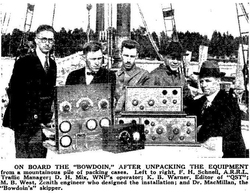 "WNP transmitted weekly 500-word press releases and listings of stations worked and heard," Marinaro said. "Once received by amateur stations, these reports were delivered to local affiliated newspapers of the North American Newspaper Alliance; from there, they were distributed syndicate-wide by telegraph."
"WNP transmitted weekly 500-word press releases and listings of stations worked and heard," Marinaro said. "Once received by amateur stations, these reports were delivered to local affiliated newspapers of the North American Newspaper Alliance; from there, they were distributed syndicate-wide by telegraph."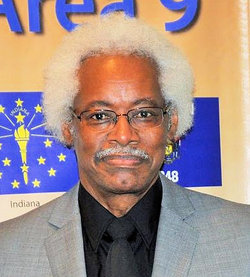 The president of OMIK Amateur Radio Association, Cliff Peoples, KE8QR, of Clayton, Ohio, died on August 5. An ARRL member, he was 81. Peoples got licensed in 1969 after returning from service in Vietnam. He served 4 years in the US Navy and more than 18 years in the US Air Force, where he was a master sergeant. Peoples held a degree in avionics systems (aircraft electronics) and taught electronic engineering and robotic design at the high school and college levels before retiring in 2006. Peoples' family has requested memorial donations to the
The president of OMIK Amateur Radio Association, Cliff Peoples, KE8QR, of Clayton, Ohio, died on August 5. An ARRL member, he was 81. Peoples got licensed in 1969 after returning from service in Vietnam. He served 4 years in the US Navy and more than 18 years in the US Air Force, where he was a master sergeant. Peoples held a degree in avionics systems (aircraft electronics) and taught electronic engineering and robotic design at the high school and college levels before retiring in 2006. Peoples' family has requested memorial donations to the  Roland "Rol" Anders, K3RA, has announced the starting date for this year's free Technician licensing class. Sessions will be held online via Zoom. Classes start on Thursday, September 9, and run for seven sessions. Anders has been holding these popular classes from the National Electronics Museum for many years. He chairs the National Conference of Volunteer Examiner Coordinators (
Roland "Rol" Anders, K3RA, has announced the starting date for this year's free Technician licensing class. Sessions will be held online via Zoom. Classes start on Thursday, September 9, and run for seven sessions. Anders has been holding these popular classes from the National Electronics Museum for many years. He chairs the National Conference of Volunteer Examiner Coordinators (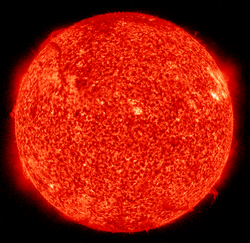 Geomagnetic indicators were also stable. Average planetary A index was 6.1, compared to 6.3 last week.
Geomagnetic indicators were also stable. Average planetary A index was 6.1, compared to 6.3 last week..jpg)








